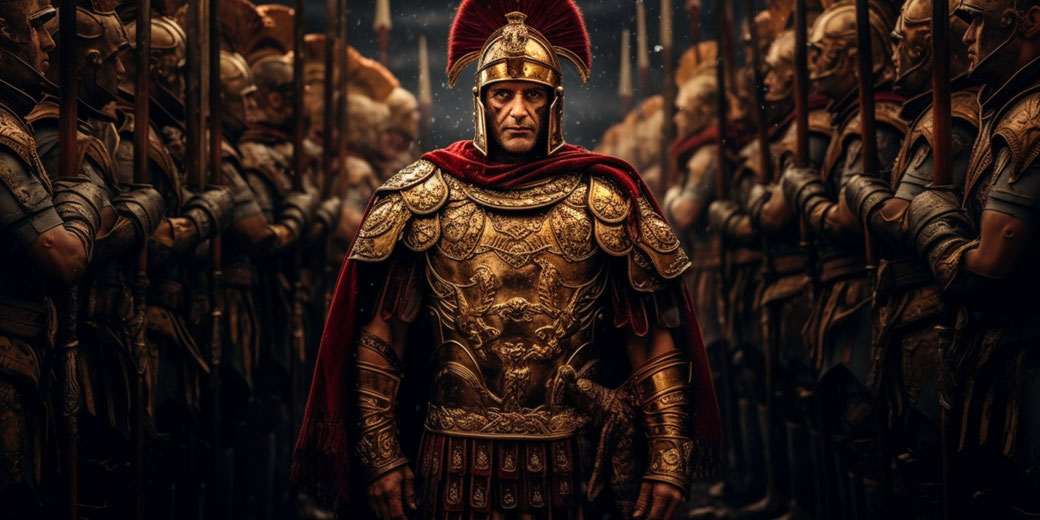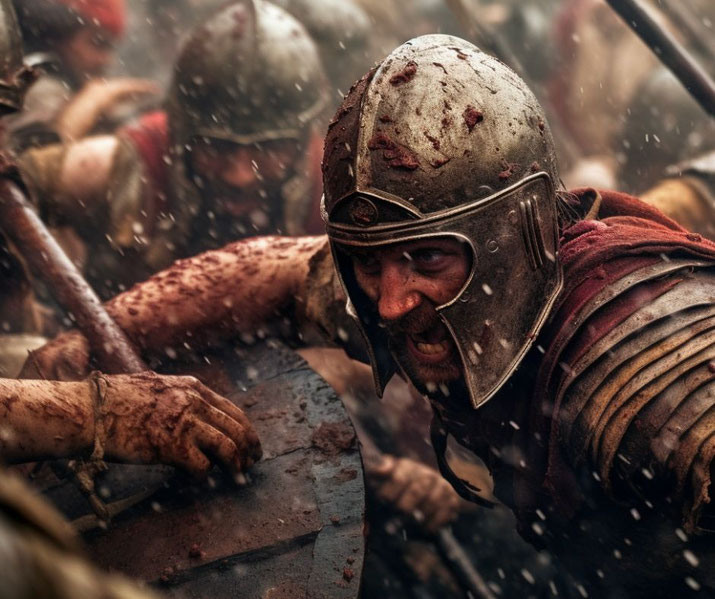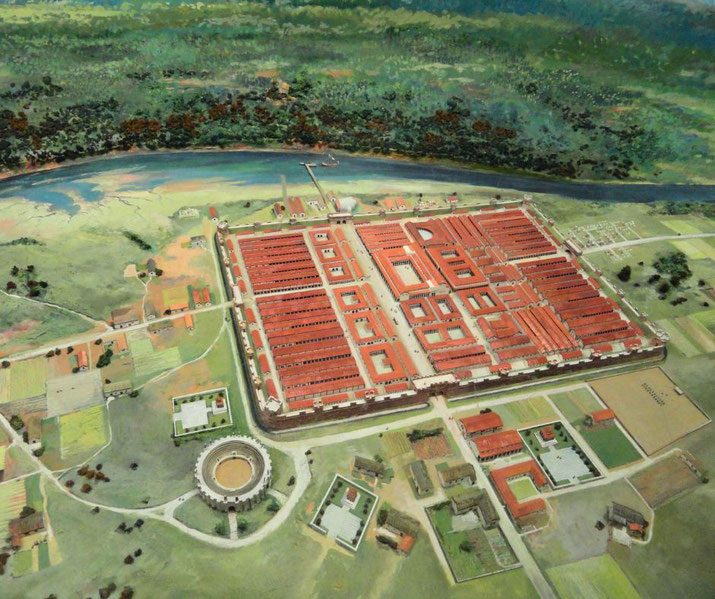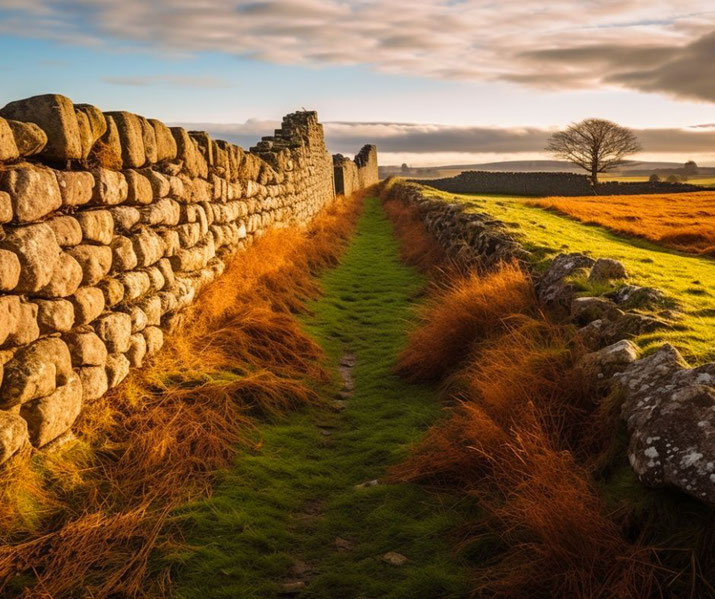Why did the Romans invade Britain?

The Roman invasion of Britain in AD 43 under Emperor Claudius is a seminal event that forever altered the trajectory of British history.
This military campaign was both a power-grab for new territories and a complex interplay of political ambition, military strategy, and cultural transformation.
Claudius, a relatively unassuming figure who came to power in Rome unexpectedly, saw the invasion as a way to secure his position and legacy.
Rome's interest in Britain before Claudius
Before the Roman legions set foot on British soil in AD 43, the island was a patchwork of tribal societies, each with its own customs, governance, and territorial claims.
The tribes, such as the Iceni, Trinovantes, and Catuvellauni, were often in conflict with each other, making the idea of a unified British resistance to the Roman invasion more of an exception than a rule.
The Romans had long been interested in Britain, not least because of its abundant natural resources like tin and lead, which were essential for the Roman economy.
The island also held strategic importance, serving as a base for potential raids on the Roman-controlled Gaul.
Julius Caesar had made two expeditions to Britain earlier, in 55 and 54 BC, but these were more exploratory and reconnaissance missions than full-fledged invasions.
Caesar's expeditions did, however, establish some level of Roman influence among certain British tribes, setting the stage for future Roman interventions.
After Caesar, Rome's attention was diverted by civil wars and internal strife, delaying any further plans for invasion.
It wasn't until the reign of Emperor Claudius, who came to power in AD 41, that the Roman gaze firmly returned to Britain.
Why did Claudius want to invade Britain?
Emperor Claudius, born as Tiberius Claudius Drusus to the prominent Julio-Claudian dynasty, was an unlikely candidate for the throne of Rome.
Often dismissed by his family for his physical ailments, which included a limp and a stutter, Claudius spent much of his early life in the shadows of his more illustrious relatives.
However, the unexpected assassination of his nephew, Emperor Caligula, in AD 41 propelled Claudius into the limelight.
Found hiding behind a curtain in the chaos that followed Caligula's death, Claudius was declared emperor by the Praetorian Guard, largely because he was the last adult male of the Julio-Claudian line.
Claudius assumed power in a Rome that was politically unstable and fraught with challenges, both internal and external.
His lack of military experience and the manner of his ascension made him appear weak, a perception he was keen to change.
The invasion of Britain offered Claudius the perfect opportunity to prove his mettle as a leader and a military commander.

How the Romans prepared for the invasion
Emperor Claudius and his advisors understood that the success of the campaign hinged on a well-coordinated military and logistical operation.
The Roman Senate was initially skeptical about the invasion, questioning its necessity and the potential risks involved.
However, Claudius was resolute, and preparations began in earnest. The Roman military machine was mobilized, drawing from legions stationed in various parts of the empire.
The invasion force was formidable, estimated to include around 40,000 men, comprising four legions and additional auxiliary troops.
General Aulus Plautius, a seasoned military commander, was chosen to lead the initial stages of the invasion.
Logistics were a critical aspect of the planning process. The Roman army needed a steady supply of food, weapons, and other essentials to sustain the campaign.
Supply lines were established, and naval arrangements were made to transport both troops and supplies across the English Channel.
The Roman navy, although primarily a Mediterranean force, was adapted for the rougher waters of the North Sea.
Specialized landing crafts were designed to facilitate the landing of troops and horses on the British shores.

How the Romans conquered Britain
In AD 43, the Roman invasion force, led by General Aulus Plautius, set sail from the ports of Gaul, crossing the English Channel to land on the shores of Britain near modern-day Kent.
The Roman army was a formidable force, comprising four legions—the Second Augusta, the Ninth Hispana, the Fourteenth Gemina, and the Twentieth Valeria Victrix—along with auxiliary troops.
The British tribes, aware of the impending invasion, had assembled their own forces, led by key figures such as Caratacus and Togodumnus of the Catuvellauni tribe.
Despite their bravery and determination, the British tribes were not a match for the Roman military machine, which was well-prepared and strategically superior.
The first significant engagement occurred at the River Medway, where the Romans faced stiff resistance from the British forces.
After a hard-fought battle that lasted two days, the Romans managed to break through, thanks in part to the brilliant tactics employed by Plautius and the discipline of the Roman legions.
The victory at Medway was a critical turning point, opening the path for the Roman forces to advance further into British territory.
Togodumnus was defeated and is believed to have died shortly after, leaving Caratacus to continue the resistance.

Emperor Claudius, recognizing the symbolic importance of his presence in the campaign, arrived in Britain with reinforcements, including war elephants, which were likely used to intimidate the British tribes rather than for actual combat.
Claudius led his troops in the final assault on Camulodunum, the stronghold of the Catuvellauni tribe.
The capture of Camulodunum was a decisive moment in the invasion, effectively breaking the backbone of organized resistance and paving the way for Roman rule in Britain.
Claudius returned to Rome shortly after, leaving the task of further conquests and consolidation to his generals.
The Roman forces continued their advance, capturing key strategic points and establishing forts to secure their gains.
Within a few years, they had control over much of southern Britain, including important tribal centers like Londinium (London) and Verulamium (St Albans).
The Roman army employed a combination of military might and diplomatic maneuvering to subdue the British tribes.
Some tribes, like the Iceni and the Trinovantes, chose to collaborate with the Romans, while others continued to resist, albeit in a fragmented and less organized manner.
How the British attempted to resist the invasion
The Roman invasion of Britain was met with fierce resistance from various native tribes, each with its own set of leaders, warriors, and strategies.
Among the most prominent figures in the British resistance was Caratacus, a chieftain of the Catuvellauni tribe.
After the defeat and presumed death of his brother Togodumnus during the early stages of the invasion, Caratacus became the de facto leader of the anti-Roman forces.
He led a guerrilla-style campaign against the Roman legions, exploiting the British landscape to stage ambushes and hit-and-run attacks.
Caratacus was a charismatic leader, able to unite various tribes in a common cause, at least temporarily.
His resistance was so effective that it took the Romans several years to subdue the territories he controlled.
The Silures and Ordovices tribes in what is now Wales also put up a strong fight, led by chieftains who understood the advantages of their rugged terrain.
They engaged in guerrilla warfare, making it difficult for the Romans to establish control.
It took a concerted military campaign, including the construction of forts and roads to facilitate the movement of Roman troops, to finally pacify these regions.
The resistance was not solely military; it also had a spiritual dimension. Druids, the spiritual leaders and intellectuals of the British tribes, played a role in rallying resistance against the Roman invaders.
The Romans recognized the influence of the Druids and took steps to eliminate this religious leadership, most notably with the assault on the Isle of Anglesey, a Druidic stronghold, in AD 60.

The changes Romanisation introduced to Britain
In the immediate aftermath of the invasion, the Romans set about consolidating their rule, establishing a network of forts and roads that facilitated the movement of troops and enabled efficient governance.
Roman law, language, and customs were introduced, fundamentally altering the way of life for the native British tribes.
The Roman administrative system, including the establishment of new cities like Londinium (London) and the introduction of Roman coinage, brought about economic changes that integrated Britain into the larger Roman Empire.
However, the Roman conquest was not universally accepted, and resistance continued in various forms.
The revolt led by Boudica of the Iceni tribe in AD 60 or 61 was a stark reminder to the Romans that the process of Romanization would not be straightforward.
The revolt caused significant destruction and loss of life, forcing the Roman administration to reconsider its approach to governance in Britain.
Following the suppression of the revolt, there was a more concerted effort to assimilate the native population through a combination of military deterrence and cultural incentives, such as Roman citizenship for loyal subjects.

The Roman presence also had a transformative impact on British society and culture.
Infrastructure projects, including the construction of roads, aqueducts, and public baths, improved the quality of life and facilitated trade and communication.
The introduction of Roman agricultural techniques and the establishment of Roman-style villas indicated a shift in land use and social organization.
Over time, a hybrid culture emerged, blending Roman and native elements, which was evident in art, architecture, and religious practices.
The Roman invasion also had geopolitical implications. The incorporation of Britain into the Roman Empire closed off a potential launching pad for invasions into Roman-controlled Gaul and secured a source of valuable natural resources like tin and lead.
However, the occupation of Britain required a significant and sustained military commitment, stretching the resources of the Roman Empire and contributing to its eventual decline.

What do you need help with?
Download ready-to-use digital learning resources
Copyright © History Skills 2014-2024.
Contact via email
With the exception of links to external sites, some historical sources and extracts from specific publications, all content on this website is copyrighted by History Skills. This content may not be copied, republished or redistributed without written permission from the website creator. Please use the Contact page to obtain relevant permission.





